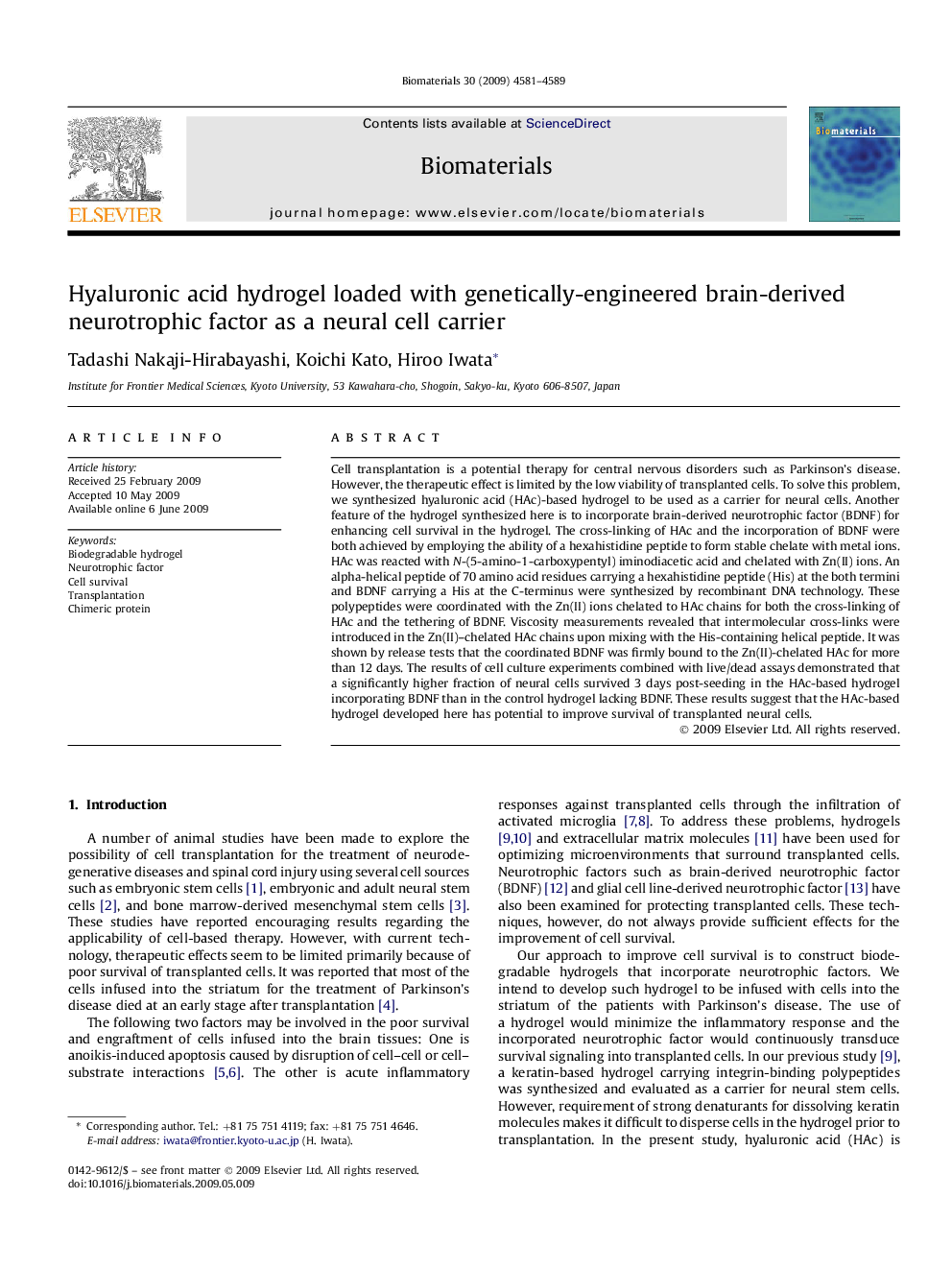| کد مقاله | کد نشریه | سال انتشار | مقاله انگلیسی | نسخه تمام متن |
|---|---|---|---|---|
| 10230062 | 673 | 2009 | 9 صفحه PDF | دانلود رایگان |
عنوان انگلیسی مقاله ISI
Hyaluronic acid hydrogel loaded with genetically-engineered brain-derived neurotrophic factor as a neural cell carrier
دانلود مقاله + سفارش ترجمه
دانلود مقاله ISI انگلیسی
رایگان برای ایرانیان
کلمات کلیدی
موضوعات مرتبط
مهندسی و علوم پایه
مهندسی شیمی
بیو مهندسی (مهندسی زیستی)
پیش نمایش صفحه اول مقاله

چکیده انگلیسی
Cell transplantation is a potential therapy for central nervous disorders such as Parkinson's disease. However, the therapeutic effect is limited by the low viability of transplanted cells. To solve this problem, we synthesized hyaluronic acid (HAc)-based hydrogel to be used as a carrier for neural cells. Another feature of the hydrogel synthesized here is to incorporate brain-derived neurotrophic factor (BDNF) for enhancing cell survival in the hydrogel. The cross-linking of HAc and the incorporation of BDNF were both achieved by employing the ability of a hexahistidine peptide to form stable chelate with metal ions. HAc was reacted with N-(5-amino-1-carboxypentyl) iminodiacetic acid and chelated with Zn(II) ions. An alpha-helical peptide of 70 amino acid residues carrying a hexahistidine peptide (His) at the both termini and BDNF carrying a His at the C-terminus were synthesized by recombinant DNA technology. These polypeptides were coordinated with the Zn(II) ions chelated to HAc chains for both the cross-linking of HAc and the tethering of BDNF. Viscosity measurements revealed that intermolecular cross-links were introduced in the Zn(II)-chelated HAc chains upon mixing with the His-containing helical peptide. It was shown by release tests that the coordinated BDNF was firmly bound to the Zn(II)-chelated HAc for more than 12 days. The results of cell culture experiments combined with live/dead assays demonstrated that a significantly higher fraction of neural cells survived 3 days post-seeding in the HAc-based hydrogel incorporating BDNF than in the control hydrogel lacking BDNF. These results suggest that the HAc-based hydrogel developed here has potential to improve survival of transplanted neural cells.
ناشر
Database: Elsevier - ScienceDirect (ساینس دایرکت)
Journal: Biomaterials - Volume 30, Issue 27, September 2009, Pages 4581-4589
Journal: Biomaterials - Volume 30, Issue 27, September 2009, Pages 4581-4589
نویسندگان
Tadashi Nakaji-Hirabayashi, Koichi Kato, Hiroo Iwata,